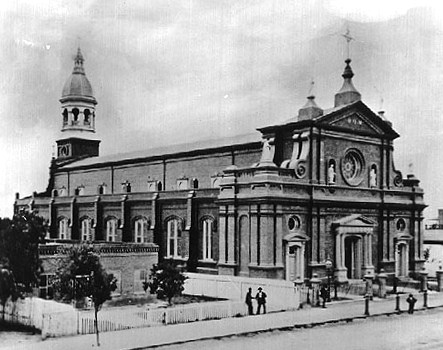Ezra F. Kysor (Ezra F. Kysor)

Architect. He was a pioneer of the building boom that helped transform Los Angeles from a frontier hamlet into an important city in the late 19th Century. Some of his surviving work is part of the Los Angeles Plaza Historic District (El Pueblo de Los Angeles), which was declared a National Landmark in 1972. His most famous structure, the Cathedral of St. Vibiana (1876), was the official cathedral of the Los Angeles Roman Catholic Archdiocese for 120 years. Ezra Frank Kysor was born in Leon, New York. Little is known of his training or early career, though by 1861 he was a practicing architect in Sacramento, California. When he moved to Los Angeles around 1868, it was a wild, rambling community of 5500 inhabitants, ramshackle wood-frame houses and adobes. Construction of the Southern Pacific Railroad from San Francisco to San Diego (begun in 1865) promised to link the city with the rest of the country, and Kysor shrewdly anticipated the growth this would bring. He enticed civic leaders with plans for buildings that would attract more cultivated settlers, designed in an Italianate style that was entirely new to the region. The commission that made his name, the 33-room Pico House (1870) in the original Downtown area, was the city’s first three-story structure and the most luxurious hotel south of San Francisco. He followed it with the neighboring Merced Theatre (1870), the city’s first purpose-built playhouse. St. Vibiana’s was apparently a compromise between Bishop Thaddeus Amat’s desire for a Spanish-themed cathedral and Kysor’s creative imperatives. Its design was based on the Iglesia de Sant Miquel del Port, an 18th Century Italian baroque church in Amat’s native Barcelona, to which Kysor added an 83-foot bell tower in his signature manner. In 1876 the Southern Pacific finally reached Los Angeles and Kysor partnered with Octavius Morgan in the architectural firm of Kysor & Morgan, which for over a decade spearheaded the creation of the city’s first commercial district. At its peak it averaged $1.6 million in commissions a year. From 1883 to 1884 alone Kysor & Morgan erected 32 business blocks, 5 churches, 46 private residences, and the 1200-seat Grand Theatre (1884, demolished 1936). His other important works include the B’nai Brith Temple, the first synagogue in Los Angeles (1873, demolished 1896); the three-story St. Elmo Hotel (1875, demolished 1921); the Mount Pleasant House (1876), now part of the Heritage Square Museum; Widney Hall at USC (1880), the earliest university building in Southern California; the Nadeau Hotel (1882, demolished 1931), L.A.’s first four-story building and the first to have an elevator; and the Garnier Block (1883). He also remodeled the historic Workman Hacienda (1874) and created additions for Downtown’s 1822 Old Plaza Church and the 1858 Masonic Hall. Kysor sold his interests to Morgan in 1888 and went into real estate development. Through successive partners Kysor & Morgan continues today as Robert Clements & Associates. It is the oldest architectural firm in Los Angeles. Most of Kysor’s buildings were razed in the 1920s and 1930s; those that remain have been granted National, State, or City Landmark status. The Cathedral of St. Vibiana suffered serious structural damage in the 1994 Northridge Earthquake and was saved from demolition only after a heated campaign by preservationists. Deconsecrated in 1996, it has been restored as an events center. (bio by: Bobb Edwards) Family links: Parents: Charles D. Kysor (1802 – 1890) Sally Kysor (1806 – 1845) Spouse: Clara E. Kysor (1853 – 1891) Children: Charles H Kyson (1883 – 1954)* *Calculated relationship
Born
- January, 08, 1834
- USA
Died
- July, 07, 1907
- USA
Cemetery
- Evergreen Cemetery
- California
- USA

